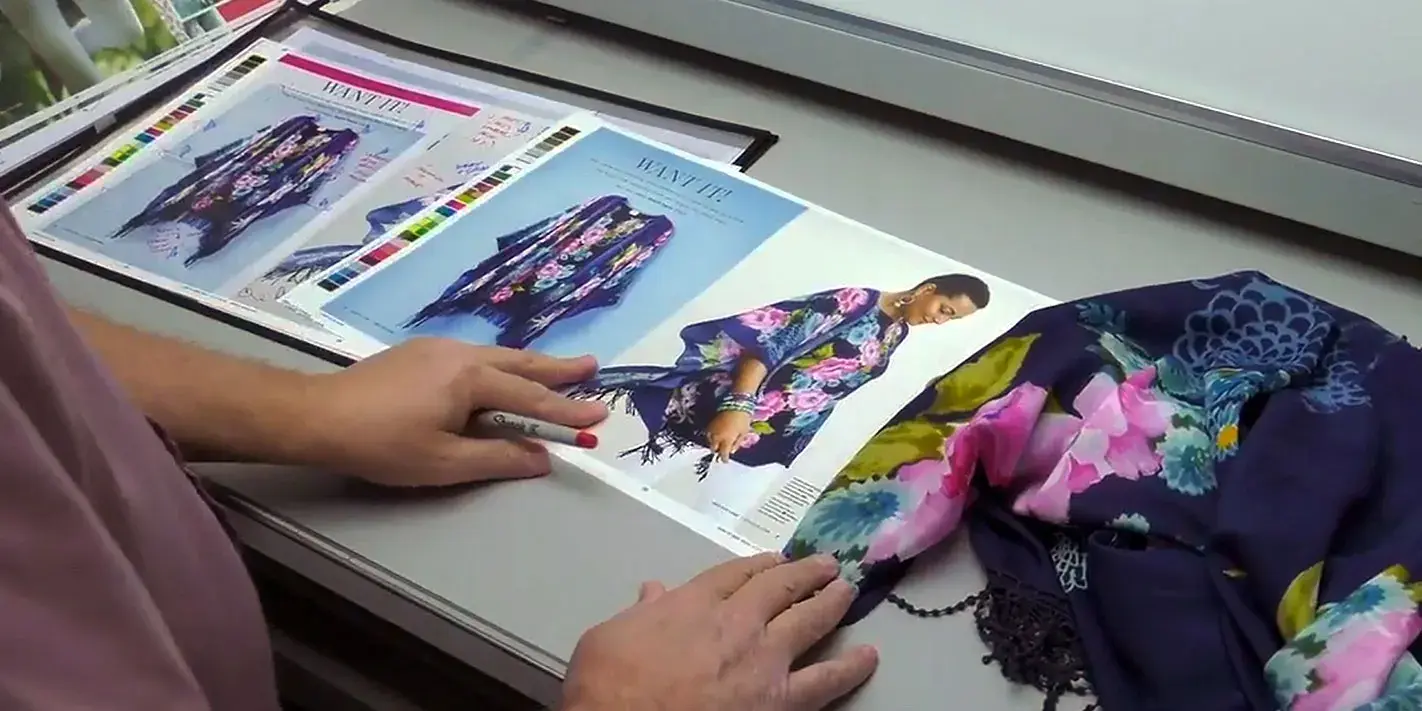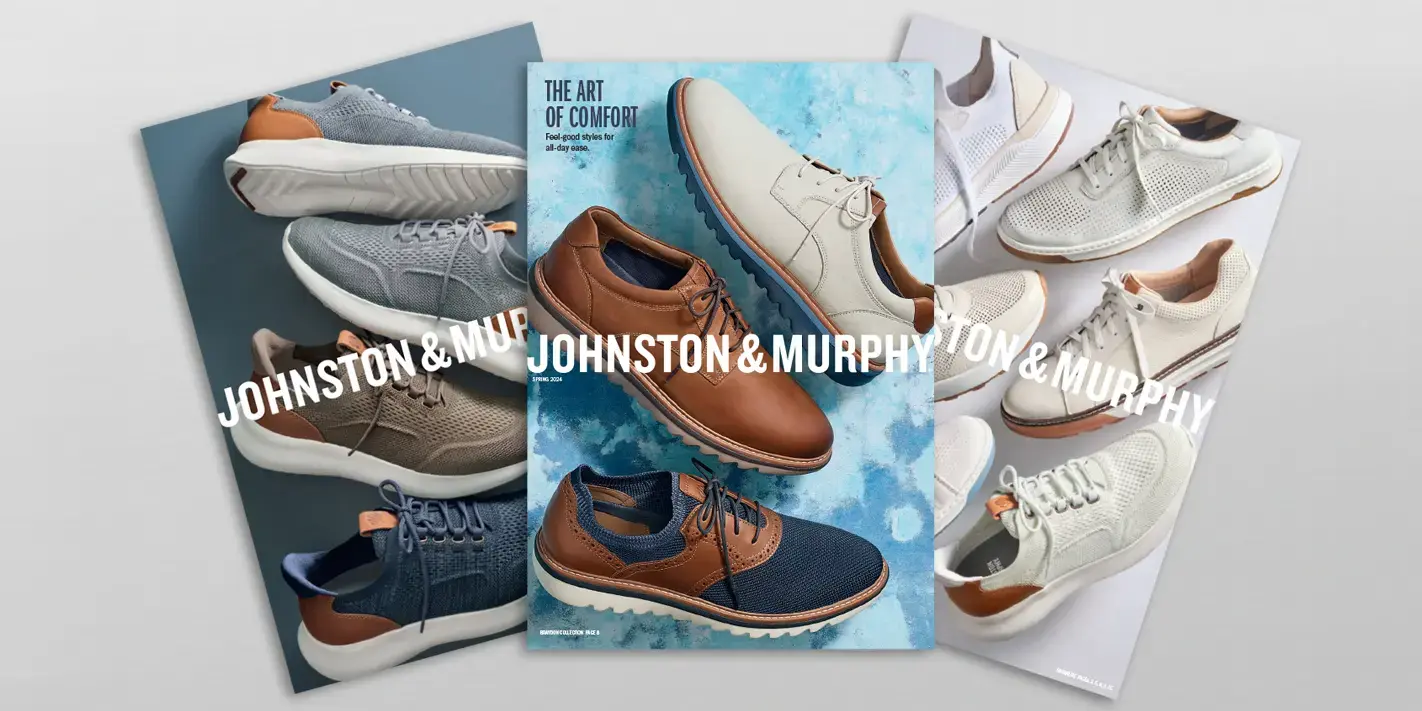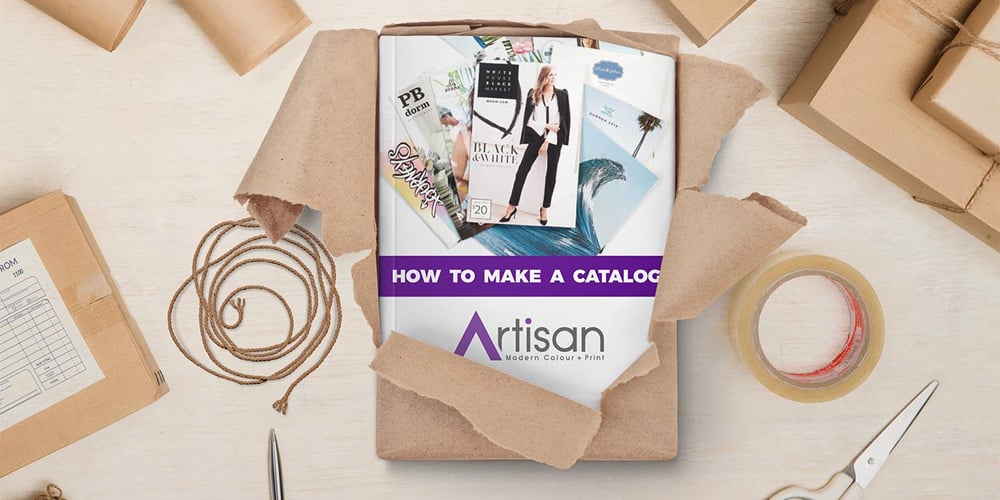How to Solve Common Challenges in Print and Digital Catalog Production

Print and digital catalogs create a powerful synergy that few marketing strategies can match.
Digital catalogs make it fast and easy for target audiences to convert online. Print catalogs, on the other hand, are the MVPs of offline engagement:
- On average, people spend 15.5 minutes browsing through print catalogs and keep them on hand for 20.3 days. That's nearly three weeks of brand exposure sitting right in front of your target audience.
- Print catalogs also have an astronomically high conversion rate, with 69% of people reviewing the contents before purchasing online.
The key to modern catalog success lies in leveraging the unique strengths of print and digital formats to cover more touch points than ever before.
This is why e-commerce giants like Wayfair, Amazon, and Zappos launched their print catalogs in 2016, 2018, and 2023, respectively. Iconic brands like Nordstrom have followed suit, re-launching their anniversary sale catalog in 2023 after phasing out the print catalog in 2019.
However, as more brands integrate print catalogs into the marketing mix, creative teams are tasked with mastering the artistry and print processes uniquely involved with catalog production.
Spoiler alert: This is not an easy task to master.
Producing catalogs that are consistent across print and digital channels requires Jedi-level training in color management, specialized software, and extensive experience in both mediums.
Since this level of expertise is often difficult to maintain in-house, brands are increasingly outsourcing the technical aspects of catalog production to specialized experts--such as Artisan Colour (forgive us for the humble brag, but we promise it’s backed by real expertise).
If you’re struggling with the complexities of color management, experiencing formatting frustrations, or require workflow wizardry, the team at Artisan Colour is here to help.
Keep reading for a behind-the-scenes look at how we blend state-of-the-art technology with decades of experience to solve common challenges in print and digital catalog production.
- DALIM ES: The Gold Standard in Catalog Production Technology
- Digital Soft-Proofing Tools to Streamline Design-to-Production Workflows
- Addressing the Complexities of Color across Print and Digital
DALIM ES: The Gold Standard in Catalog Production Technology
At Artisan Colour, we continuously invest in cutting-edge catalog production technology. One of the most powerful tools in our arsenal is DALIM ES, a comprehensive workflow and production software developed by DALIM SOFTWARE.
Founded in Germany in 1985, DALIM SOFTWARE has been at the forefront of digital and print content production for over 35 years.
From pioneering the first digital files and integrating color capabilities into computer graphics in the late '80s, DALIM SOFTWARE has continually evolved to meet the needs of the printing and packaging industries. Their innovative solutions have expedited high-fashion shoots, product launches, and brand campaigns for top publishers, retailers, and agencies worldwide.
As the gold standard of software for creating, producing, managing, and integrating print and digital content, we leverage DALIM ES for its robust and collaborative production capabilities. One of the main reasons why DALIM ES is indispensable to our workflow is its advanced color communication and soft proofing tools.
Digital Soft-Proofing Tools to Streamline Design-to-Production Workflows
Collaboration is critical for the circular workflows required in catalog production, and this is another area where DALIM ES excels.
For example, during an active photo shoot in Chicago, files can be instantly uploaded to a cloud environment straight from camera capture and instantly available to all stakeholders.
This allows on-site teams to begin the annotation and selection process immediately. Since files are instantly updated in a centralized location, it eliminates the duplication and renaming of working files on individual devices. This ensures all stakeholders and teams are working from the most current file.

Since DALIM ES is built as a production workflow, images can be sent straight to the Artisan Colour team, who can immediately start working on the files.
For instance, if the on-site creative team notices that a jacket's color isn’t quite right during a photo shoot, the files can be immediately annotated and sent straight to our team for processing.
Our team updates and views annotations in real time. This creates a seamless workflow that’s critical for efficient, accurate, and streamlined catalog production.

Here are other ways we use DALIM ES to streamline the design-to-production workflow with our clients:
- Accurate soft-proof color rendering with server-based closed-loop monitor calibration technology enhances true-to-life color reproduction across all media formats.
- Multi-page viewing is essential for reviewing complex catalogs and ensuring the final product meets design and quality specifications.
- Automated pre-flighting and file processing for repetitive tasks, such as file normalization and conversion.
- Seamless integration with Adobe Creative Cloud enables creative teams to work within their preferred environment to streamline the design-to-production workflow.
- Scalability for large-scale catalog production environments through microservices architecture that allows for the breakdown of production workflows into any number of micro-tasks.
Addressing the Complexities of Color across Print and Digital.
Though DALIM ES is an indispensable tool for modern catalog production, achieving consistent colors across print and digital formats can still be challenging.
For example, the varying interactions of colors with different materials and lighting conditions often necessitate the human touch.

This is why catalog production teams partner with specialized experts who can handle the technical aspects of color management and ensure true-to-life color across every medium.
At Artisan Colour, our team works meticulously to ensure perfect color across all media using sophisticated color-matching technology, spectrophotometers, and calibrated workflows.
In addition to our in-house catalog production and color management services, we also offer an extensive menu of complementary services, including:
- Image retouching and manipulation.
- RGB color management.
- G7 Idealliance certified contract proofing.
- Digital asset management.
- Fully equipped fashion and product photography studio.
- Preflight, prepress, and premedia services.
- Comprehensive digital printing services.
- Direct mail marketing.
- Signage, graphics, and banners.
Since 1998, brands like Patagonia, Neiman Marcus, and Johnston & Murphy have entrusted Artisan Colour to provide customized solutions for their catalog production needs.
We can’t wait to earn your trust, too.
Contact our team of Artisans today to learn more.






